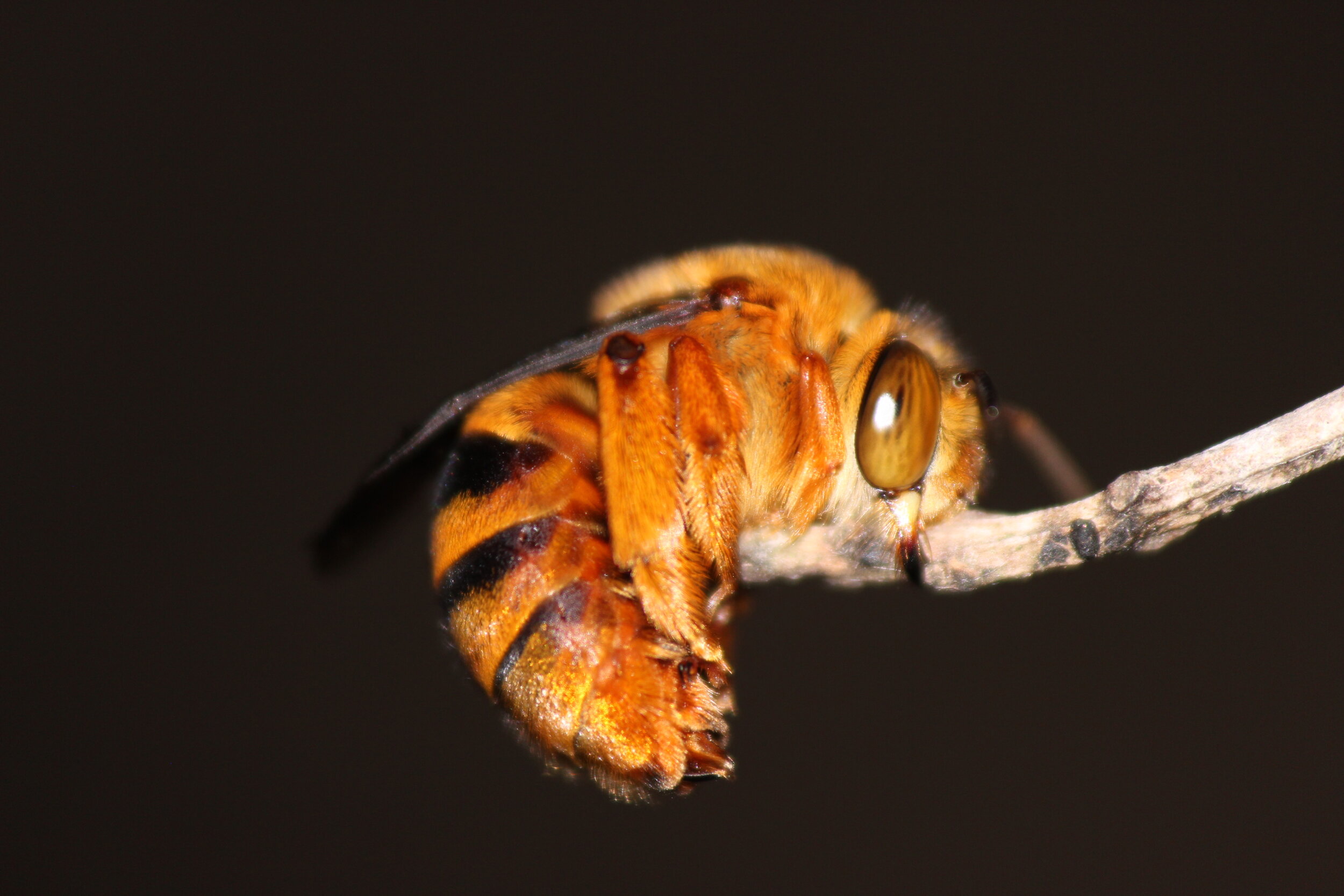Solitary Bees
Did you know that Australia has over 1660 different species of native bees? It is believed this could be up to 2000 – there are so many yet to be found.
Nearly all of our native bees are solitary – they do not live in a hive. They nest in the ground, in cavities of dead trees, and in stems of plants. Many of them love our houses with our various sized holes in brick or timber work. They really love our 120 year old Queensland workers cottage – holes everywhere!
Some of our most popular and numerous bees are the Blue Banded Bee, the Teddy Bear Bee, Resin Bee, and the Leafcutter Bee. For the sake of sanity, I will use these common names rather than their scientific name.
Our solitary bees are very important for pollination. In fact, the Blue Banded and Teddy Bear Bees are buzz pollinators. There are certain flowers that require buzz pollinators to pollinate them. This means they land on a flower and vibrate their body at the exact frequency to shake the flower open and release the pollen. Regular honey bees cannot do this. So if you have tomatoes in your garden, it is almost certainly these bees that are pollinating them.
Teddy Bear Bee roosting on a branch at night
Blue Banded Bee around a Tomato flower
Insect Hotel
Insect Hotels
These are great to attract the Resin, Leafcutter, and Masked Bees, as well as a few other solitary bees and wasps.
Insect hotels are simple to make, but there are some important points to remember. Use branches, old timer, and bamboo. Don’t use any timber that has been treated. Each hole should be at least 100mm deep and should range in diameter from 3mm to 8mm. This will allow you to accommodate a range of species.
Here is a picture of mine that is now a few years old and populated continuously from year to year.
You can see in mine I used both cut branches and bamboo and its clear to see that nearly every hole in the branches has been used. Much of the bamboo has been untouched. I have seen multiple species of bees but mostly resin and leafcutter bees. There are also predatory Gasteruptid wasps that deliberately target these bee nests and lay eggs inside with their long ovipositors. Fortunately they generally only get into the first one or two egg cells, as there are numerous egg cells laid along the tube of the nest.
Resin Bee
Resin Bee Nest with chewed leaf to seal off the nest
Firetail Resin Bee
Potter Wasp Nest
Gasteruptid Wasp looking to lay eggs with her long ovipositor
Some of the major retail stores are now stocking insect houses. However, they are often not deep enough, nearly always made solely of bamboo, and the holes are often way too big. Avoid these as they will not attract bees. You may just end up with wasps and ants. If you do find one deep enough, at least 100mm deep, then fill up some of the bigger bamboo sticks with paper straws as a better option. If there are pieces of timber in the hotel, then drill some different sized holes.
Another tip – these are great to have nearby so you can watch the bees. However, don’t put them over nice tiles or your favourite decking because the bees constantly remove old resin which they drop on the floor and is very sticky and hard to remove. That’s experience talking!
Blue Banded Bee House
These are designed for ground nesting bees. Blue Banded bees in particular like a sandy/clay loam and will often be found nesting under verandas where there is exposed ground. The house that I made uses rectangular guttering where you wet your mix and set it in the piece. Add a couple of holes in each brick as a start for the bees. When they dry just rest them in the frame, which in this case was made out of an old pallet, with cheap mis-tinted paint from Bunnings. There’s really no need to spend a lot of money on these sorts of activities. Notice in mine I used the roof space for some solitary bee spaces as well.
Alternatively, just leave some bare ground in a shady protected spot in your garden and you may find the bees just set up home there.
Gardens
Bees need flowers!! That’s where they collect their nectar and pollen to both live on and to store in their nests for their offspring. So the more flowers you can have the more pollinators you will attract. I have noticed that our native solitary bees will pretty much go for any flowers so just go crazy and plant plant plant!
I have a fairly untidy but colourful front garden designed to support our bees, with lots of my annual flowers now self-seeding year after year.








